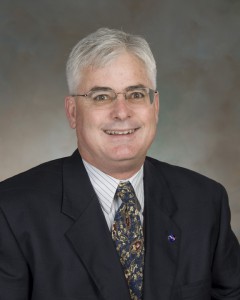By Patrick C. Stoliker
Deputy Director
NASA Armstrong Flight Research Center
As the summer vacation season rolls to a close, I find myself reflecting on some of the historic places in our country I have had the opportunity to visit. While at work, many see me as an engineer or manager, but another passion I have is history, and I’ve been fortunate to visit some amazing places.
The recent 45th anniversary of the Apollo moon landing made me think of the first practical flight of the Wright Brothers and my visit to Kitty Hawk, North Carolina. Standing on Kill Devil Hills and pacing off the distance for each of the four flights was a sobering experience as I considered the routine nature of air travel today and how much I do of it.
I took my son to the Gettysburg battlefield when he was 10 and was entranced by the knowledge of the events he had accurately learned in school. The experience of walking the ground where Pickett’s charge took place brought to life Abraham Lincoln’s words, “The brave men, living and dead, who struggled here, have consecrated it, far above our poor power to add or detract.”
Visits to Plymouth Rock, Williamsburg, and Jamestown have given me an opportunity to reflect on the colonists as they settled New England. And similarly, stops at the missions in California tell the story of west coast exploration. The Baseball Hall of Fame in Cooperstown, New York was an oddly patriotic experience, as the game has been a part of American lifestyle for most of the existence of our Nation.
Visiting the launch pads at Kennedy Space Center brought back childhood memories of watching the Mercury, Gemini and Apollo missions and the awe of watching Neil Armstrong take the first step on the moon (on a black and white TV!). I had the opportunity to watch the last launch of Atlantis at that facility.
And I realized I take for granted a historic place I visit on a daily basis, NASA’s Armstrong Flight Research Center, Edwards Air Force Base, and Rogers Dry Lake. As I drive in to work each morning, I look out onto the lakebed where supersonic flight was born. The ramps behind my building have been host to the X-15 aircraft that took humans to edge of our atmosphere at nearly seven times the speed of sound. Neil Armstrong flew that vehicle before going to the moon, as well as flying the LLRV as a precursor to the moon landing.
As a child, I remember airshows and seeing the variety of lifting bodies that were towed over and then flown to landings on the lakebed. The M2F1, M2F2, HL-10, X-24A, and X-24B were all precursors validating the concept that enabled the space shuttle. As a student engineer, I watched the approach and landing tests of the Enterprise and the first landing of Columbia. The lifting body flights continued with the X-38 and X-40. I drive by the F-8 Digital Fly-By-Wire aircraft and the X-1E every day.
I hope I get to see many more historic flights, such as the upcoming flights of the X-56 Multi-Use Technology Test bed (MUTT) and Dream Chaser when it returns this fall. When I arrive early in the morning as the sun is just coming up over the nearby mountains and the hangar doors are wide open as preparations are under way for the latest flight test, I realize that I don’t have to go far to see some pretty amazing history.
